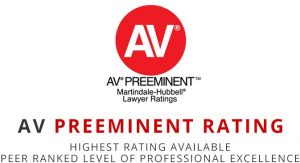How to File Bankruptcy in Miami
If you or your family are considering bankruptcy as a solution for your problems, there are several steps you should follow as part of learning how to file bankruptcy paperwork properly.
Step One: Understanding your Debt If your debt is not past a certain point, you may not be eligible for bankruptcy. Before you even begin the bankruptcy process, you should take a look at your debt and determine which of your debts can actually be discharged under bankruptcy laws. Some debts cannot be removed – if you don’t know which debts can be removed and how they’re currently impacting you, then this is a good time to begin consulting with a bankruptcy attorney.
Step Two: Understanding your Property Exemptions As you learn how to file bankruptcy papers, you’ll see that various forms of property (land, vehicles, etc.) are permitted as exemptions and cannot be seized – or, depending on the circumstances, you are entitled to get at least some compensation from their sale. Outside of your debt, you should know what you’ll be able to keep, and it is vital to determine this as early as possible.
Step Three: Ensure your Eligibility If you have any significant degree of income (typically higher than the median income for your area that a family of your size will possess), you may not be eligible for bankruptcy. The information gathered in the first two steps will help you determine whether or not you are eligible as you continue working through how to file bankruptcy papers. This is another stage in which employing the services of an attorney can be particularly helpful.
Step Four: How to File Bankruptcy Paperwork There is a lot of paperwork associated with bankruptcy proceedings that you’ll need to go through. In fact, as you decide how to file bankruptcy paperwork, you’ll be making decisions on everything from which bits of property to try and keep to figuring out which things should be reported to the court. Everything should be double-checked for accuracy before it is submitted; false information on any paper could invalidate the proceedings.
Step Five: Filing and Meetings A professional attorney can help you understand how to file bankruptcy paperwork in the right places. Following this, you will likely need to attend at least one meeting at the courthouse (or another designated area) where the trustee and any creditors can have their questions answered. This is not the conclusion of the bankruptcy process, but it is a major step forward.
Step Six: Learning How to File Bankruptcy Objections and Motions If you have any objections or motions to make (such as disputing a creditor’s claim), this should be done in a timely manner following the help with understanding how to file bankruptcy paperwork correctly. This is not applicable in every bankruptcy case.
Step Seven: Obtain the Discharge When all the paperwork has been filed and all issues with how to file bankruptcy paperwork settled properly, you will obtain your discharge. This is a legal notice saying that you have no responsibility to pay the debts listed, and creditors cannot demand it of you. Congratulations; with this paper in hand, you’ve completed the bankruptcy process! Disclaimer: Some individual circumstances may have an effect on your ability to file for bankruptcy, and as such, the advice presented here may not be fully appropriate in all circumstances. This material should not be taken as professional legal counsel. For more information on bankruptcy and any other steps you may need to take, consult with a qualified attorney. This material is primarily focused on Chapter 7 Bankruptcy and is not as relevant to Chapter 13 Bankruptcy.


